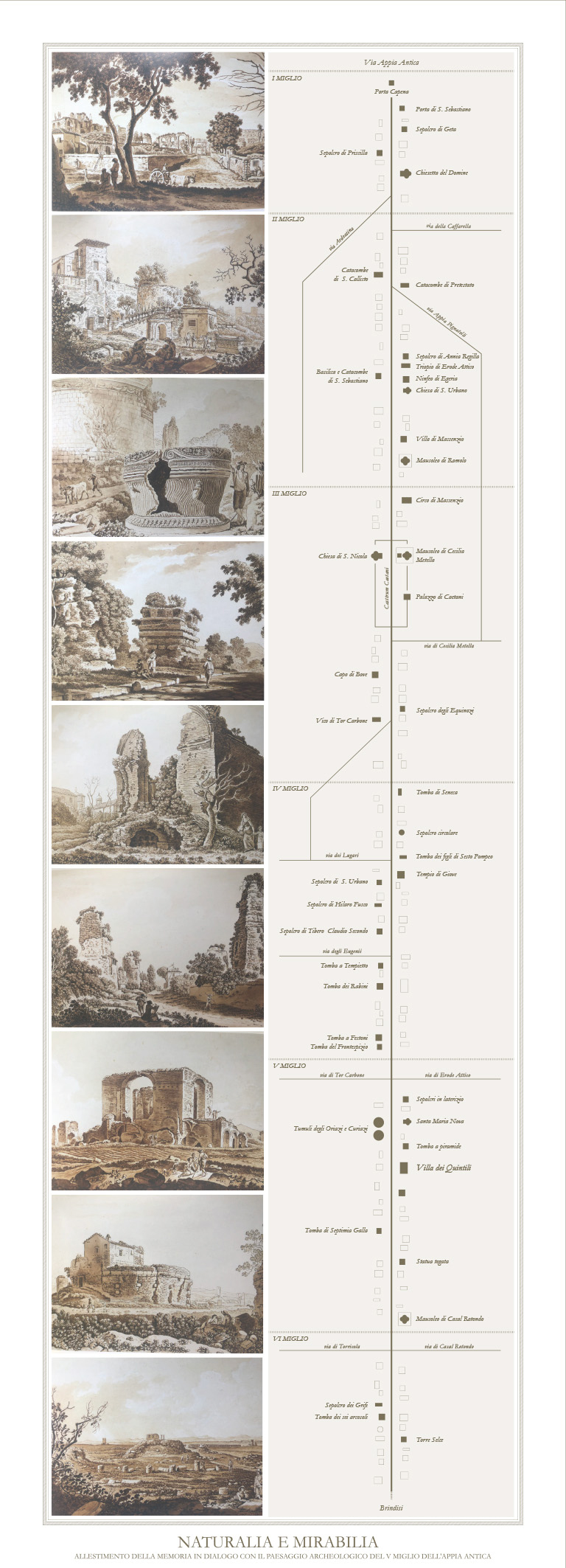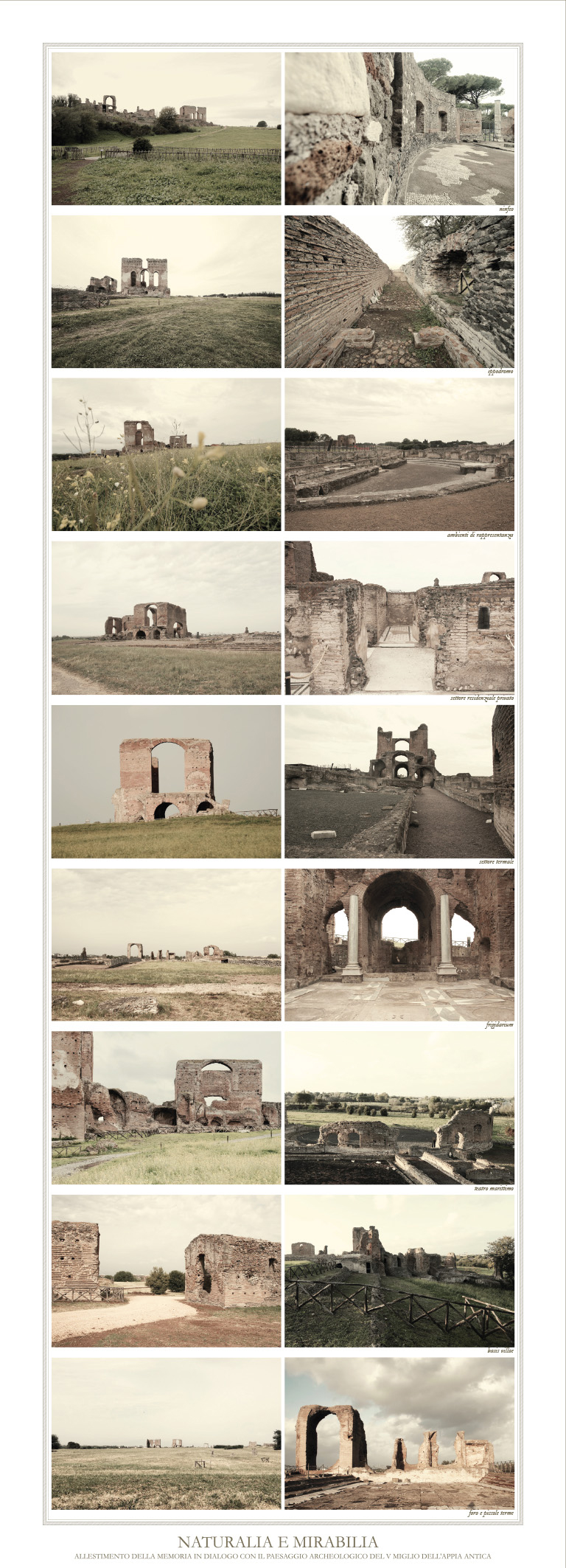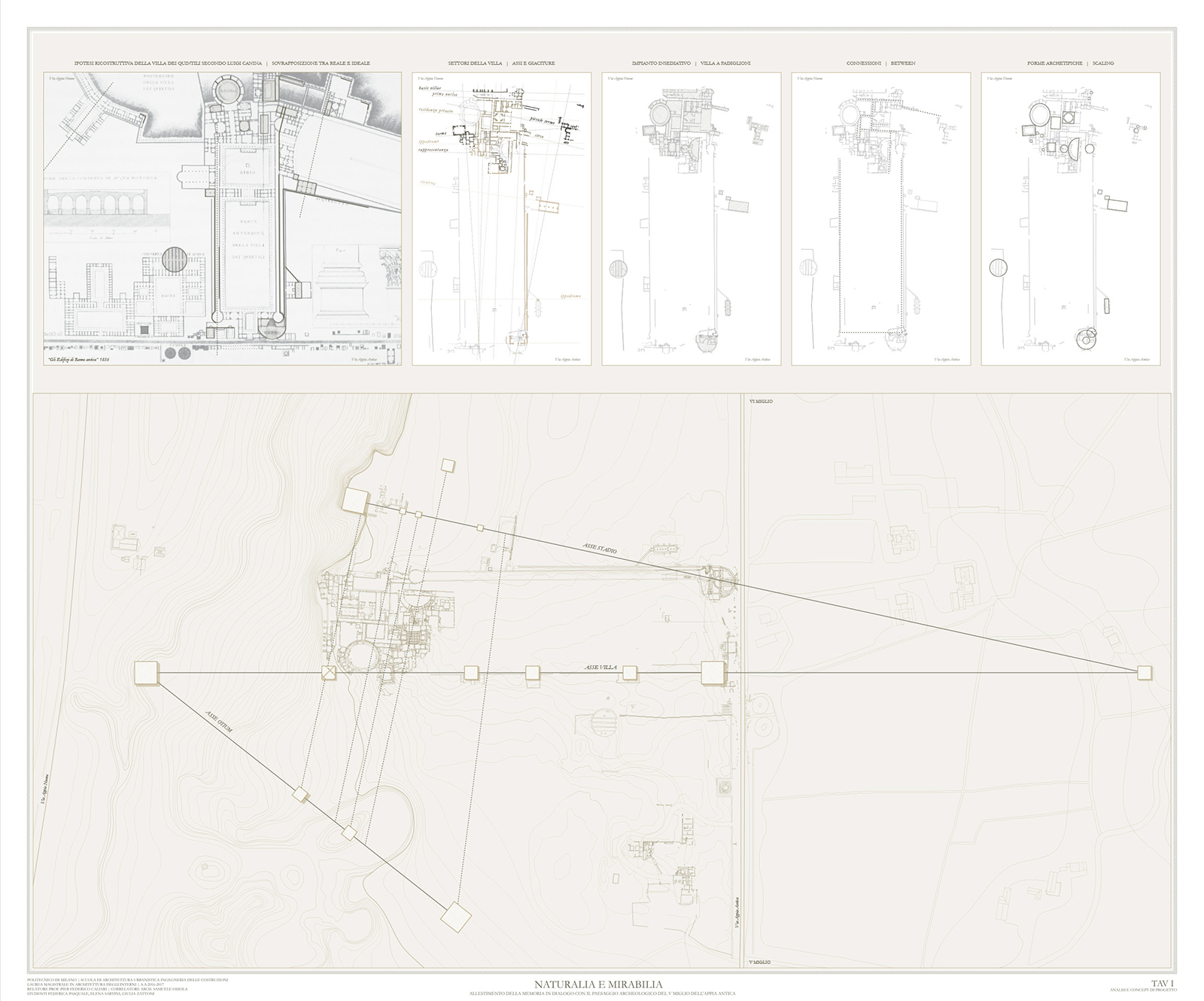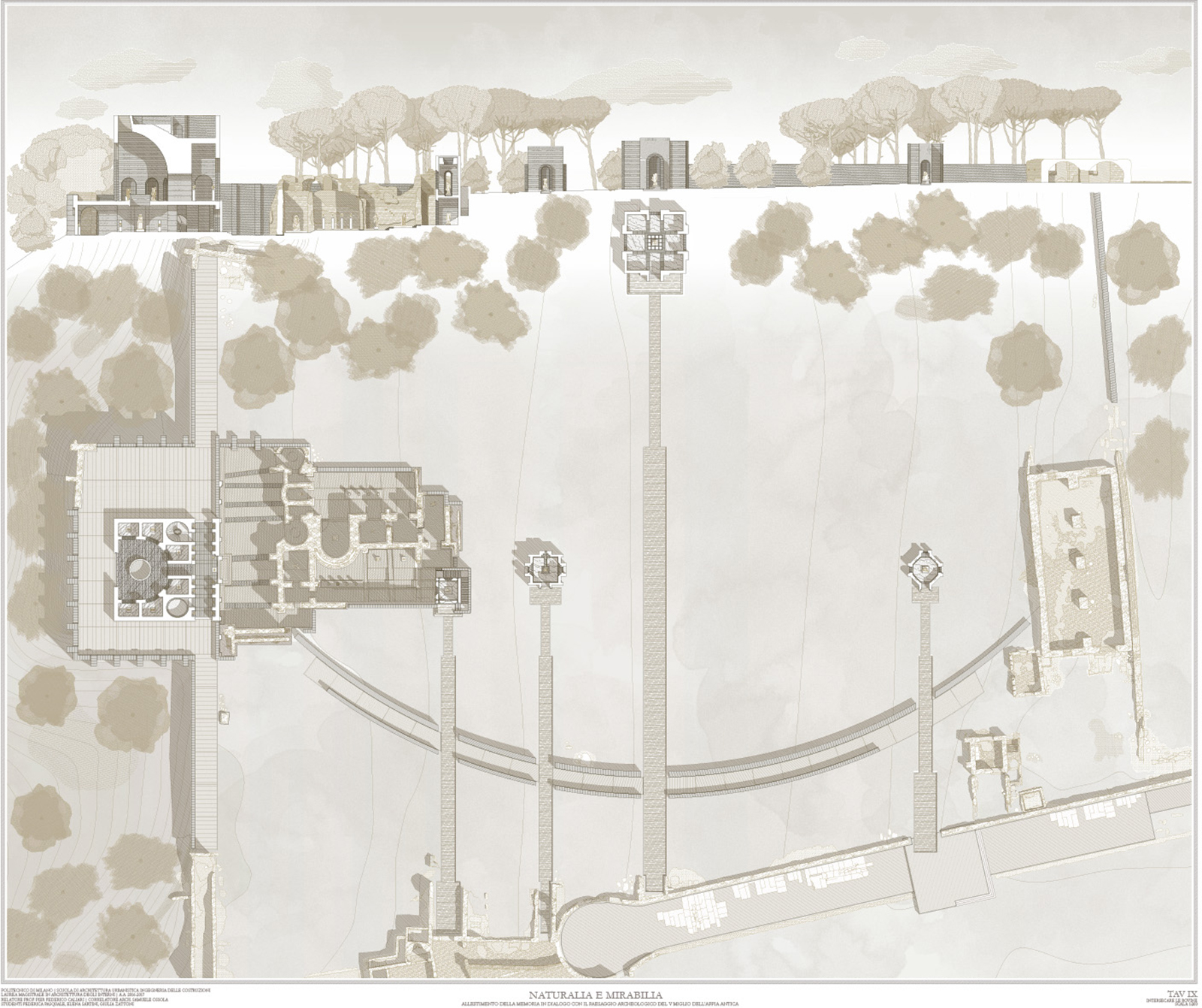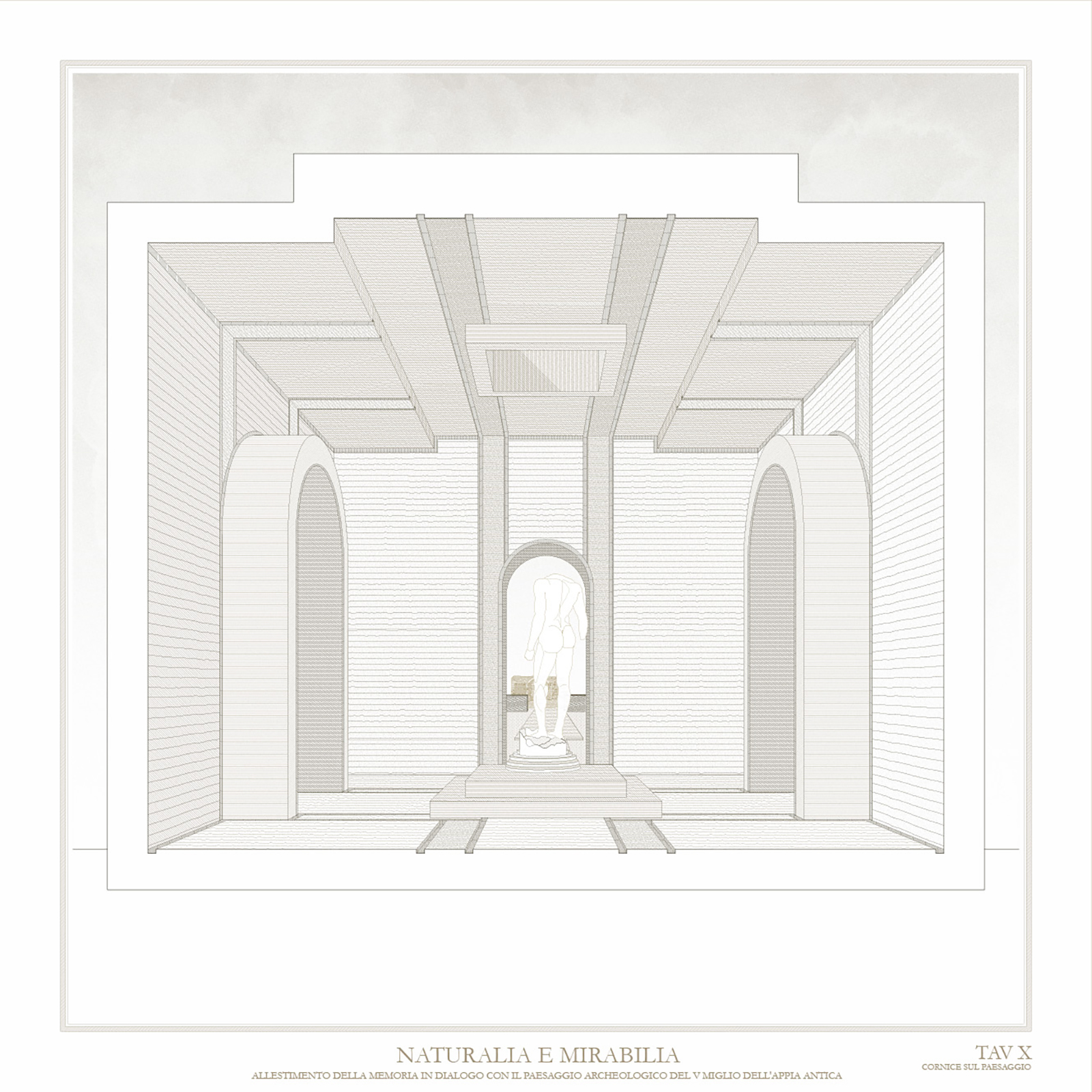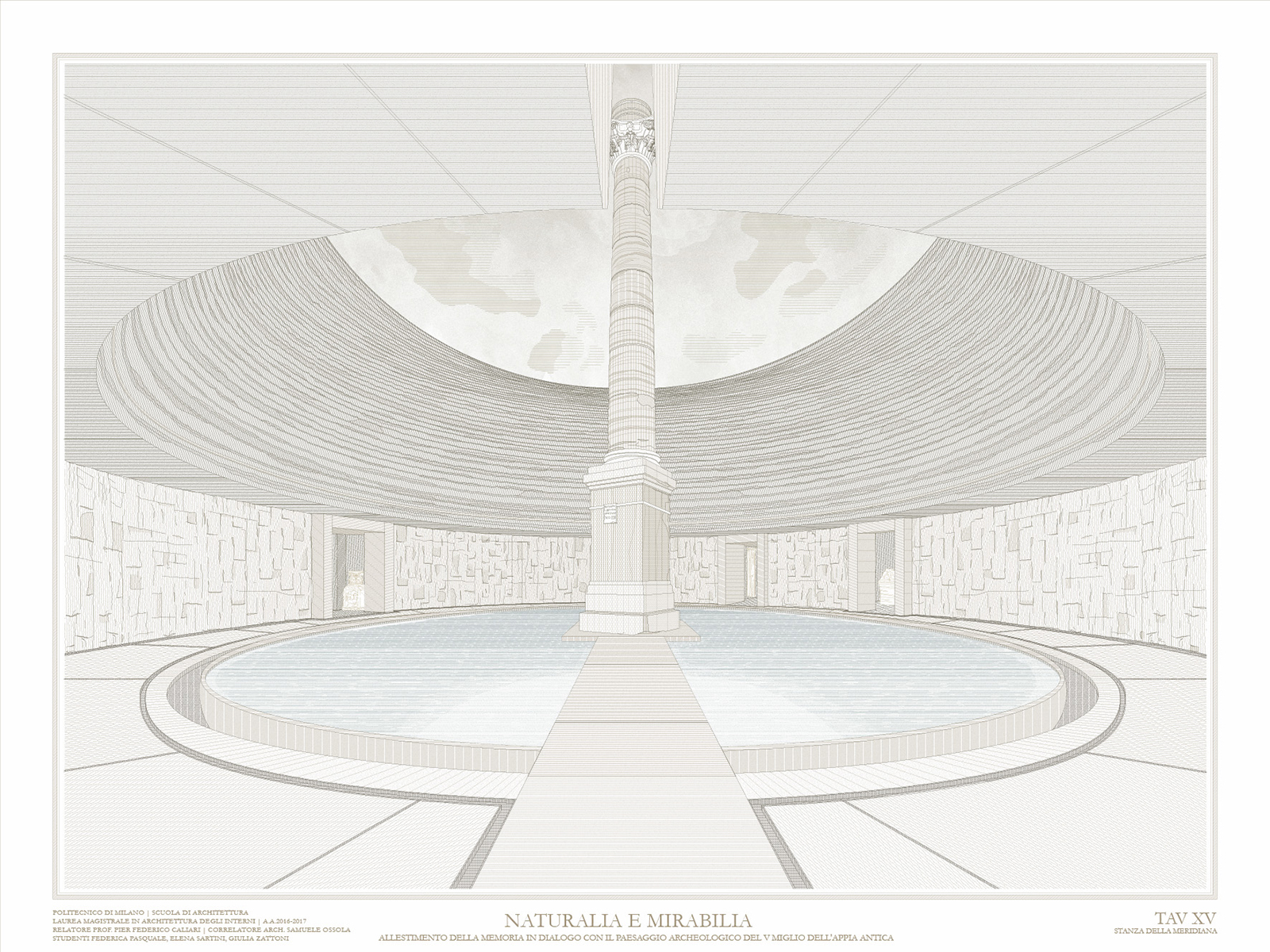Tesi di Laurea
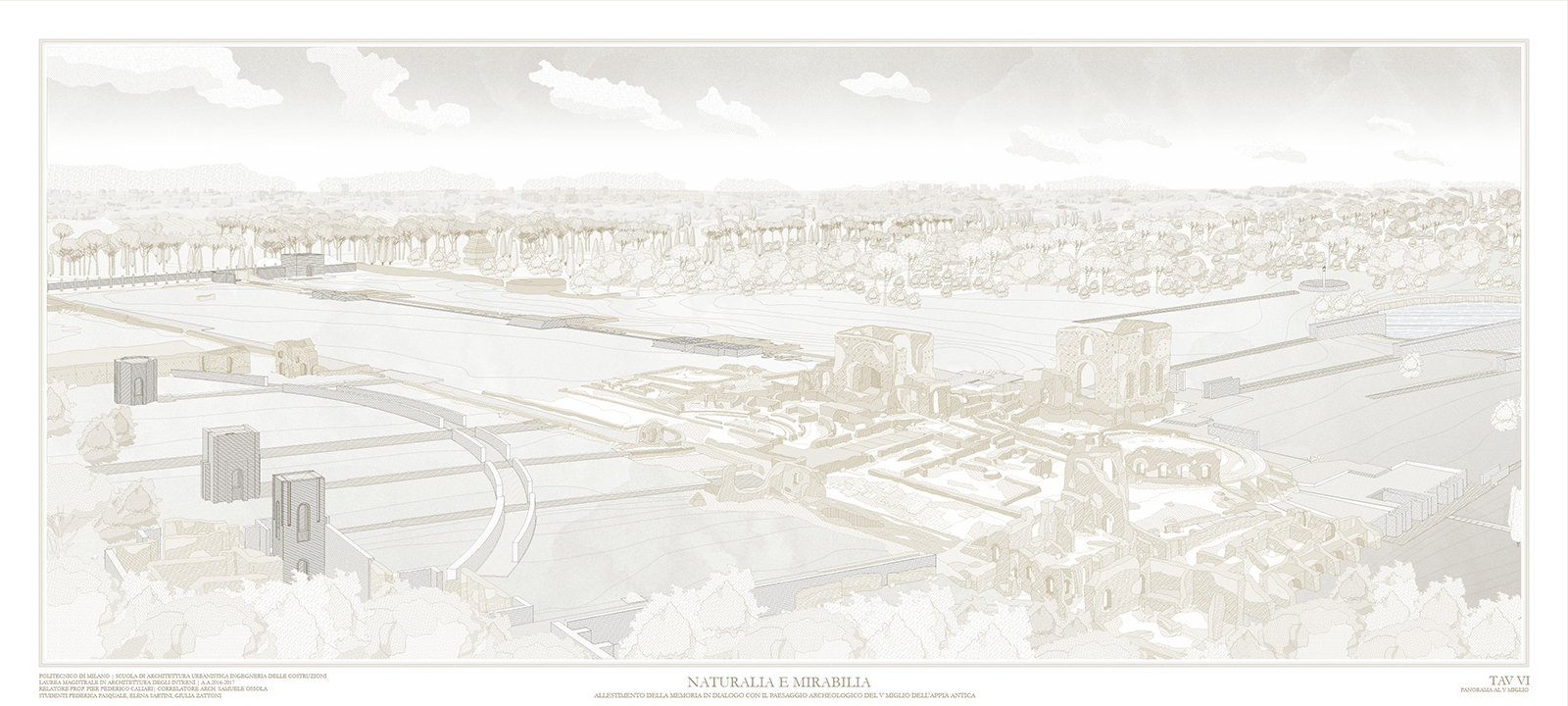
NATURALIA E MIRABILIA.
Allestimento della memoria in dialogo con il paesaggio archeologico al V miglio dell’Appia Antica
Elena Sartini, Giulia Zattoni, Federica Pasquale
Relatore
Pier Federico Caliari
Correlatore
Samuele Ossola
Anno Accademico
2016/2017
«Ci accade di contemplare dei paesaggi e di ricavarne una sensazione di felicità tanto vaga quanto intensa; più quei paesaggi sono “naturali”, più la coscienza che noi ne abbiamo è quella di una permanenza, di una lunghissima durata che ci fa misurare per contrasto il carattere effimero dei destini individuali. Le rovine aggiungono alla natura qualcosa che non appartiene più alla storia, ma che resta temporale. Non esiste paesaggio senza sguardo, senza coscienza del paesaggio» così Marc Augè descrive il rapporto dialettico tra rovine e paesaggio, tra naturalia e mirabilia. Lo stesso connubio si disvela lungo le tracce della Via Appia, Regina Viarium dell’antichità, dove frammenti di architetture del passato caratterizzano l’orizzontale paesaggio dell’agro romano. Fin dall’antichità, la rovina all’interno del «paesaggio» ha costituito un potente dispositivo per la sollecitazione di memorie, l’evocazione di significati e l’ispirazione progettuale per il disegno di architettura. La natura stratigrafica della Villa dei Quintili, il suo dispiegarsi lungo la dimensione temporale, ha portato a considerare il luogo come un palinsesto da interrogare attraverso una strategia progettuale che si delinea incrociando e sovrapponendo due livelli narrativi, uno reale, l’altro fittizio, provenienti dalla lettura di segni esistenti e dall’interpretazioni dei disegni ideali di Luigi Canina. All’interno di un luogo concepito come un palinsesto, il progetto è stato pensato come una sovrascrittura interpretativa, proponendosi di recuperare la complessità dei segni presenti, trovare possibili interazioni con essi e dare loro evidenza attraverso la proposizione di soluzioni che non rinunciano alla loro identità e contemporaneità. Assumendo il paesaggio quale custode di racconti latenti, il progetto vuole creare una finestra archeologica proponendosi di restituire una completa lettura del sito attraverso degli interventi progettuali di carattere rievocativo.
“It could happens to us to contemplate landscapes and to experience a feeling of happiness which is as vague as intense; the more those landscapes are “natural”, the more we have the consciousness of a permanence, of a very long stay that makes us measure by contrast the ephemeral character of individual fates. The ruins add to the nature something that no longer belongs to the history, but that remains temporal. There is no landscape without a gaze, without the landscape’s awareness.” This is how Marc Augè describes the dialectic relationship between ruins and landscape, between naturalia and mirabilia. The same connection of nature and historical memory shows itself along the traces of the Via Appia, Regina Viarium, among all the ancient streets, integrating past architecture’s fragments into the Roman countryside horizontal landscape. Since the ancient times the ruin within the “landscape” has represented a powerful device for memories’ solicitation, meanings’ evocation and planning inspiration for the architecture’s design: confronting ourself with an archaeological site means in fact moving ourself inside an ancient landscape, a register of precious documents that prove to the reader the transformations of the place. The archaeological landscape’s statigraphic nature of the Villa dei Quintili, and its unfolding along the temporal dimension, has led to consider the place as a palimpsest to be interrogated through a planning strategy that is outlined by crossing and overlapping two narrative levels, one real and the other fictitious, both coming from the reading of existing signs and from the interpretation of ideal suggestions. The planning category we refer to here is the narration: the archaeological traces system and the landscape morphological components, linked to the ideal drawings of Luigi Canina, become the plot of a story. Inside a place conceived as a palimpsest, the project has been considered as an interpretative overwriting and it proposes itself to recover the complexity of the present signs and to find possible interactions with them in order to highlight them through the solutions’ proposal that do not renounce their identity and contemporaneity and so producing new interpretations of the archaeological site of the Villa dei Quintili. Through the story, the intervention aims to create an archaeological window that reveals to the visitor the history of the place by semantically enriching it through some re-evocative planning interventions: by considering the landscape as custodian of latent stories waiting to be revealed, the project pursues the aim to recover also these lost signs in order to reestablish a whole reading of the site.

